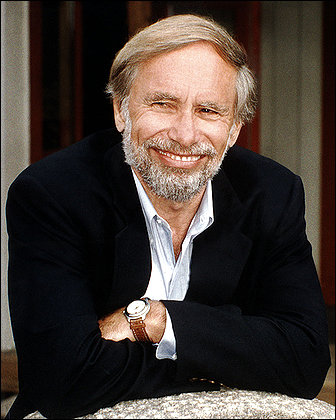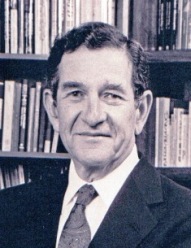<Back to Index>
- Psychologist Ole Ivar Løvaas, 1927
- Psychologist Richard J. Herrnstein, 1930
PAGE SPONSOR

Ole Ivar Løvaas (8 May 1927 – 2 August 2010) was a clinical psychologist at UCLA. He is considered to be one of the fathers of applied behavior analysis (ABA) therapy for autism through his development of the Lovaas technique and the first to provide evidence that the behavior of autistic children can be modified through teaching. His method is the only modality approved by the Surgeon General's Office and has over thirty years of scientific research. In recent times, people refer to his method as ABA.
Findings of independent peer reviewed studies show benefits associated with the Lovaas method. Systematic reviews have also not found definitive evidence to support claims that the Lovaas method is superior to other active interventions. In his original studies in the late 1950s aversives such as electric shock successfully treated approximately 50% of individuals engaging in instances of extreme self - injury whose life expectancy was reduced by secondary infection. Subsequent studies relied on extinction, in these cases, giving attention when not engaging in self - injury.
In addition to his extensive work with autistic children, in the 1970s Lovaas co-authored four papers with George Rekers on children with atypical gender behaviors. The subject of the first of these studies, a child of 4 years 11 months at the inception of treatment, committed suicide as an adult; his family attribute the suicide to this treatment.

Richard J. Herrnstein (May 20, 1930 – September 13, 1994) was an American researcher in animal learning in the Skinnerian tradition. He was one of the founders of quantitative analysis of behavior.
His major research finding as an experimental psychologist is called "matching law" -- the tendency of animals to allocate their choices in direct proportion to the rewards they provide. To illustrate the phenomenon, imagine that there are two sources of reward, one of which is twice as rich as the other. Herrnstein found in his research that animals often chose at twice the frequency the alternative that was seemingly twice as valuable. This is known as "matching," both in quantitative analysis of behavior and mathematical psychology". He also developed melioration theory with William Vaughan, Jr.
He was the Edgar Pierce Professor of psychology at Harvard University and worked with B.F. Skinner in the Harvard pigeon lab, where he did research on choice behavior and behavioral economics. In 1965, and with Edwin Boring, Herrnstein authored 'A Source Book in the History of Psychology'.
Herrnstein's research focused first on natural concepts and human intelligence in the 1970s, and eventually found a meteoric end with Charles Murray in their controversial best selling 1994 book, The Bell Curve. Herrnstein died of peritoneal mesothelioma shortly before the book was released.
Perhaps Herrnstein's most notable accomplishment in this field was the formulation of the matching law. According to the matching law, choices are distributed according to rates of reinforcement for making those choices. An instance of this for two choices can be stated mathematically as
where R1 and R2 are rates of response for two alternative responses, and r1 and r2 are rates of reinforcement for the same two responses. Behavior conforming to this law is 'matching,' and explanations of matching and departures from matching constitute a large and important part of the literature on behavioral choice.
